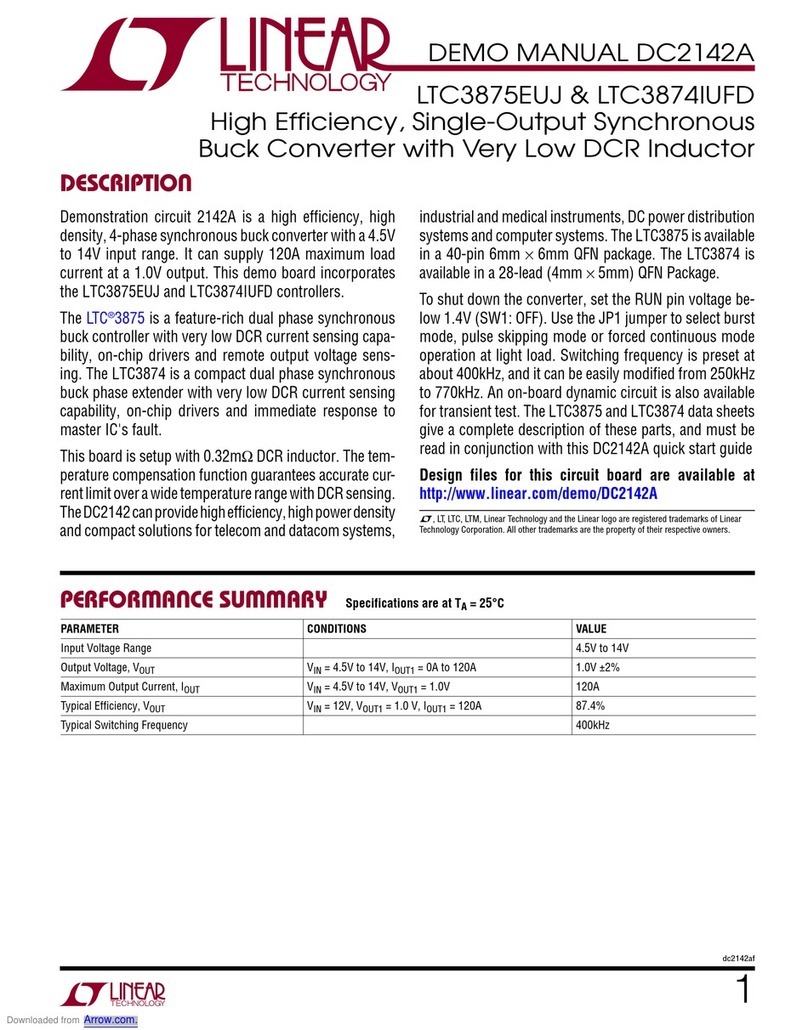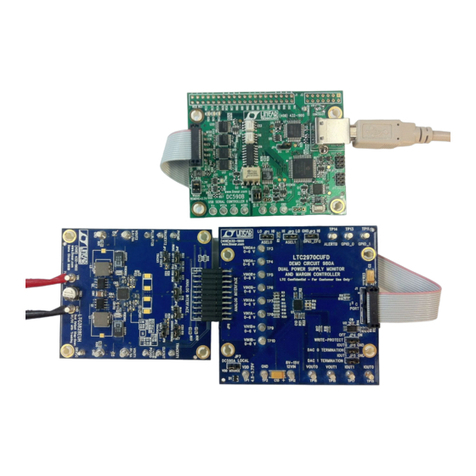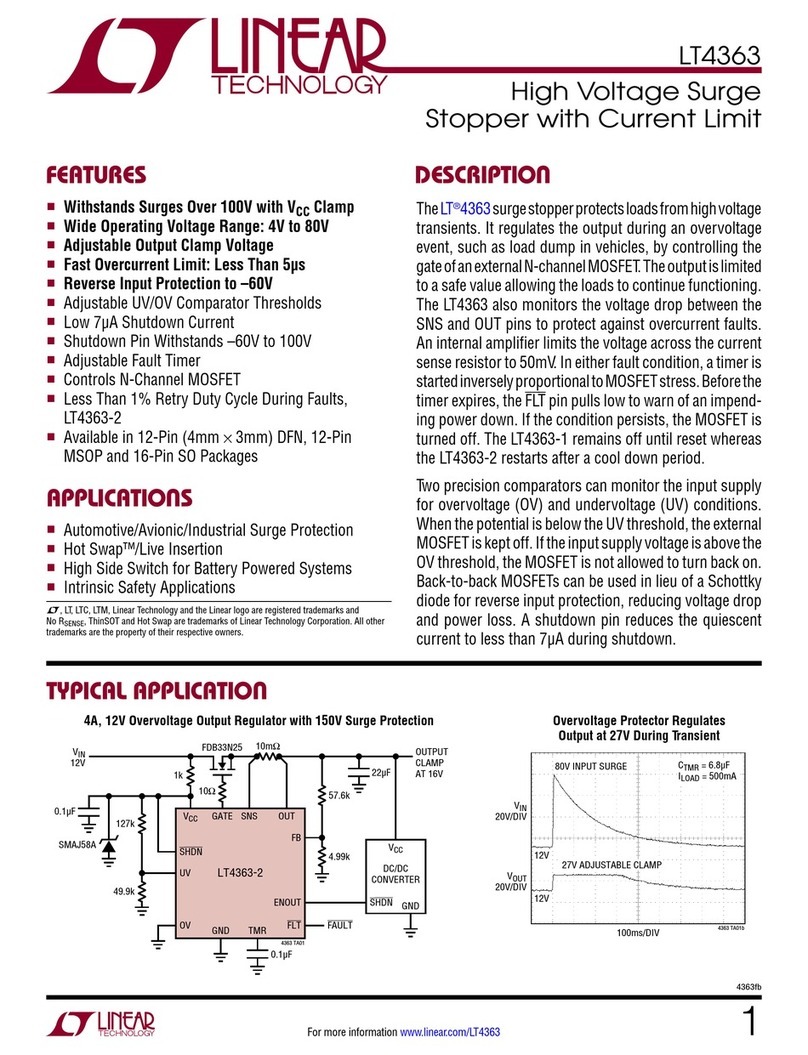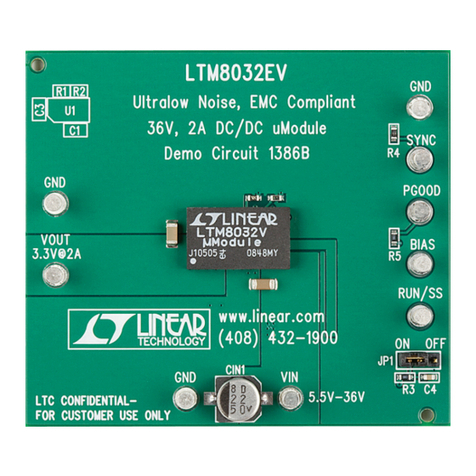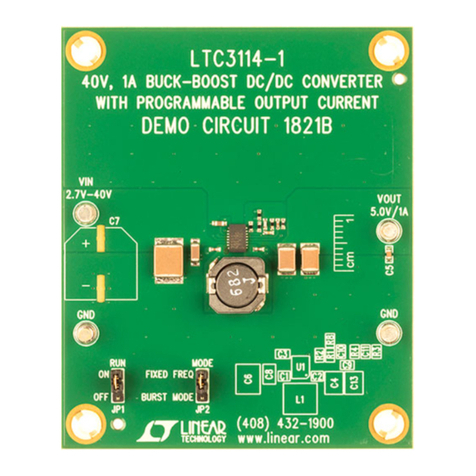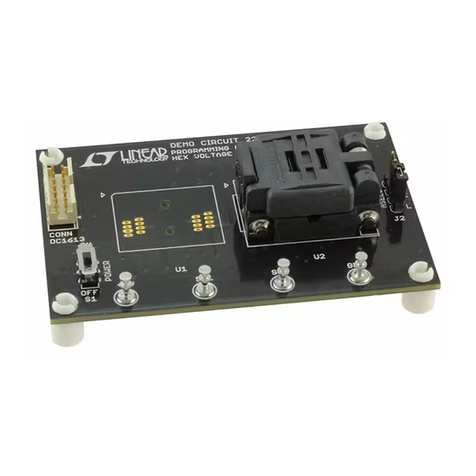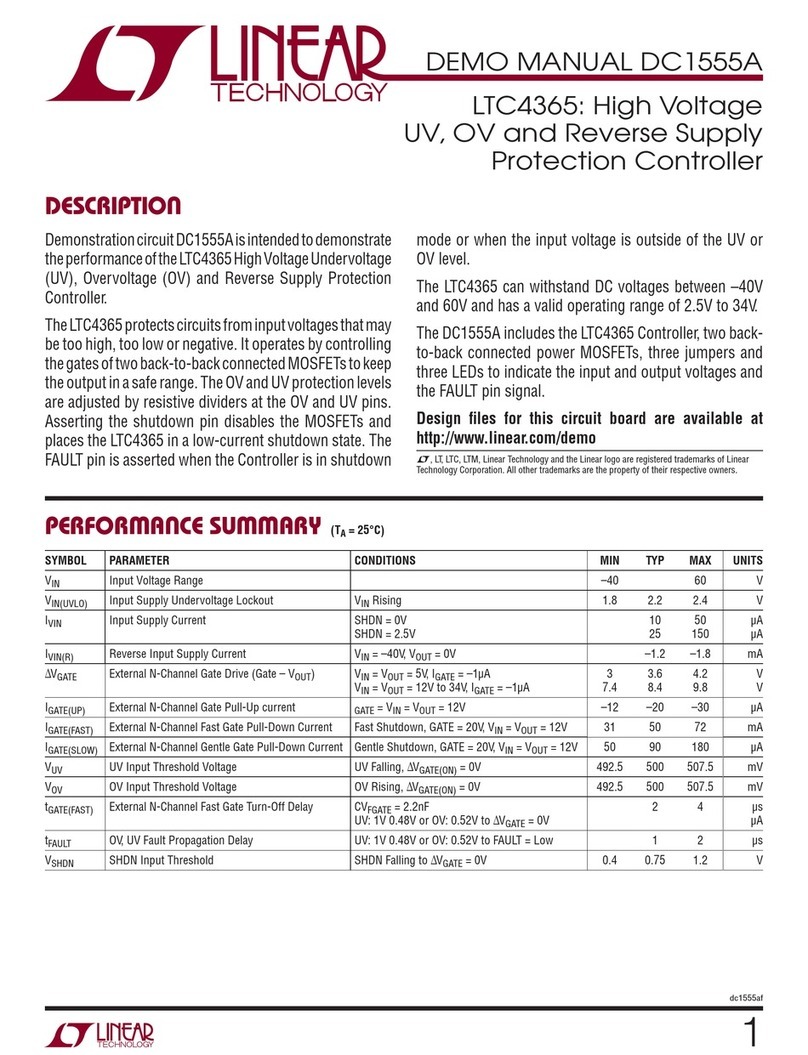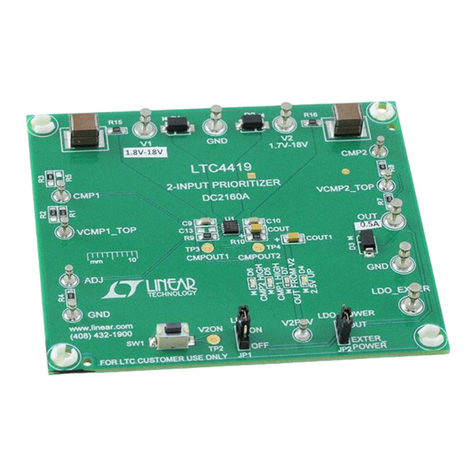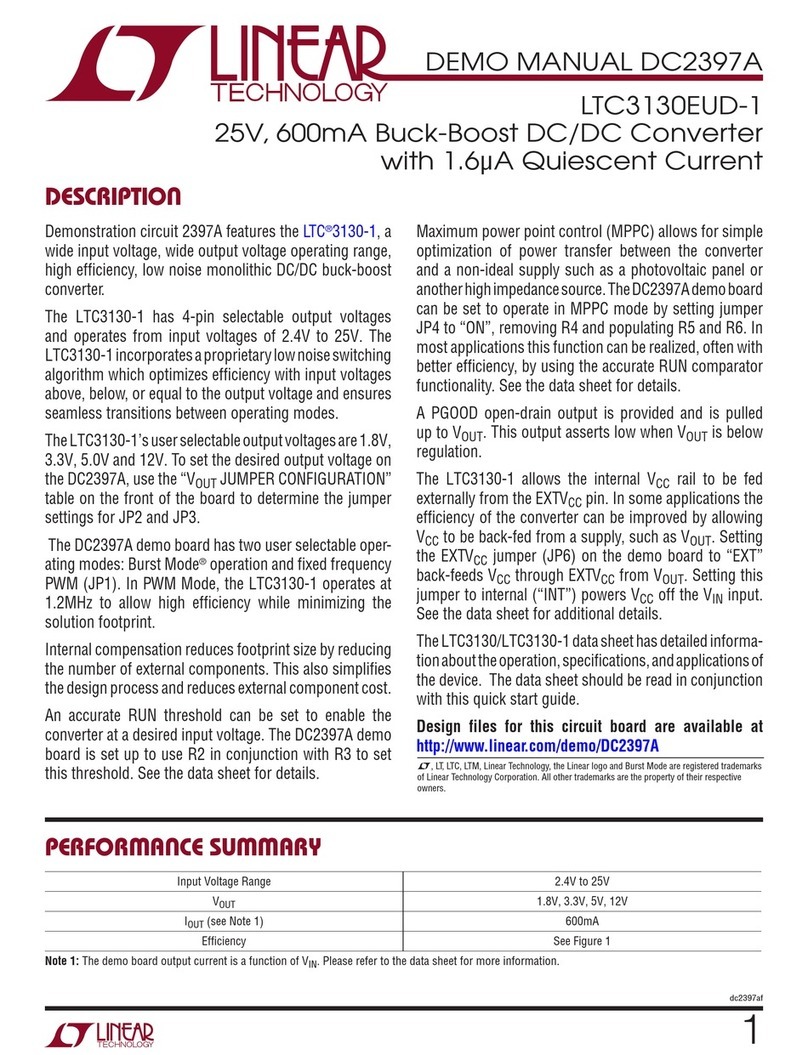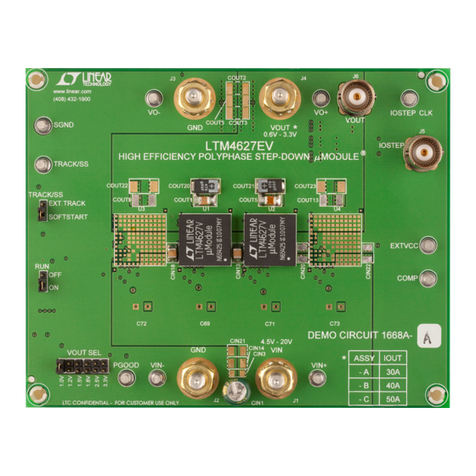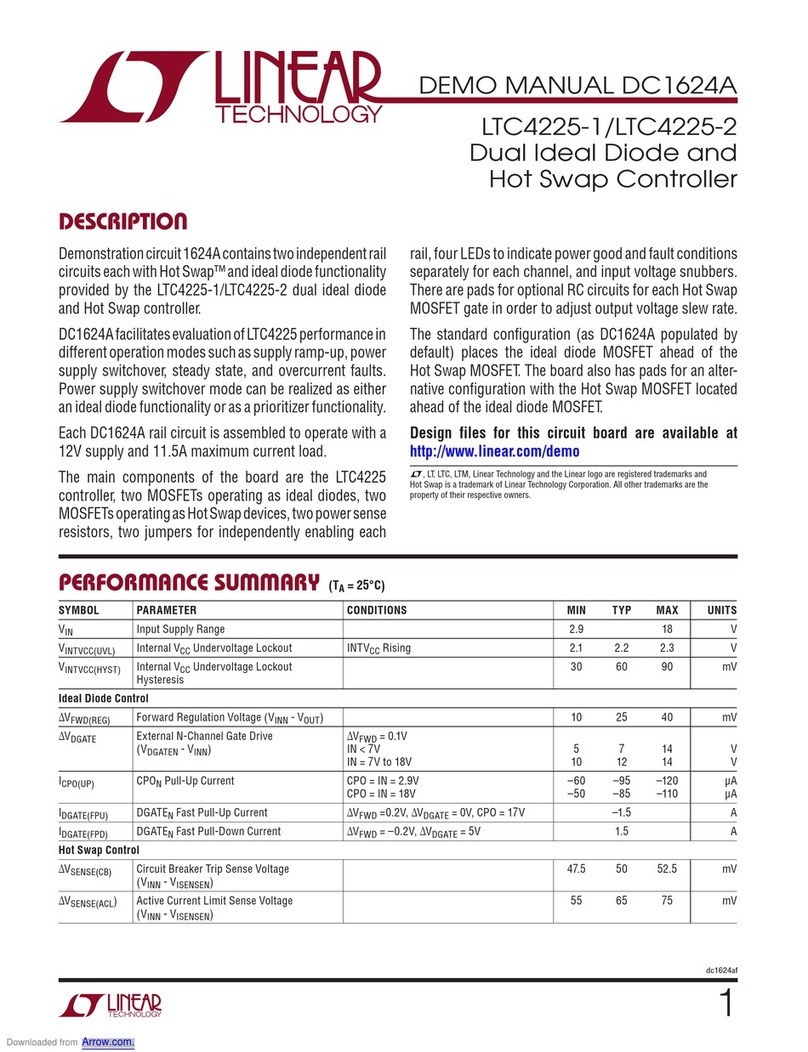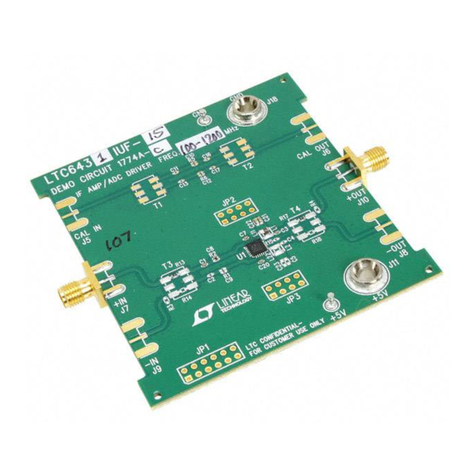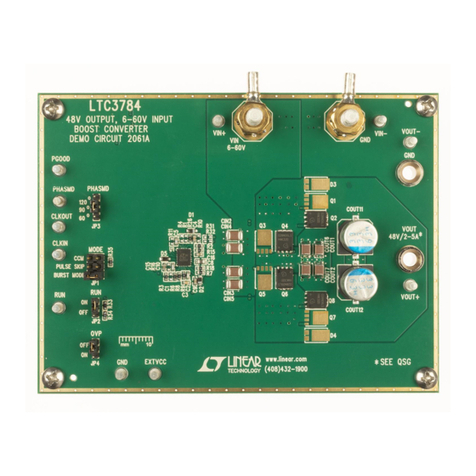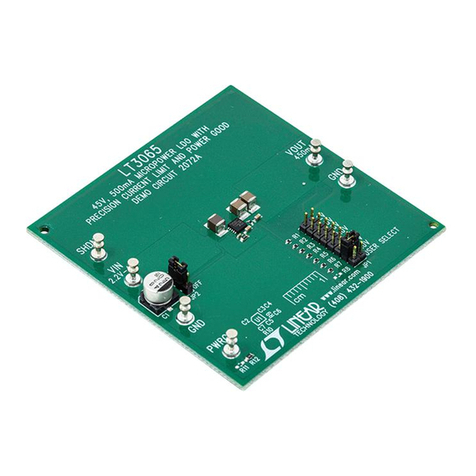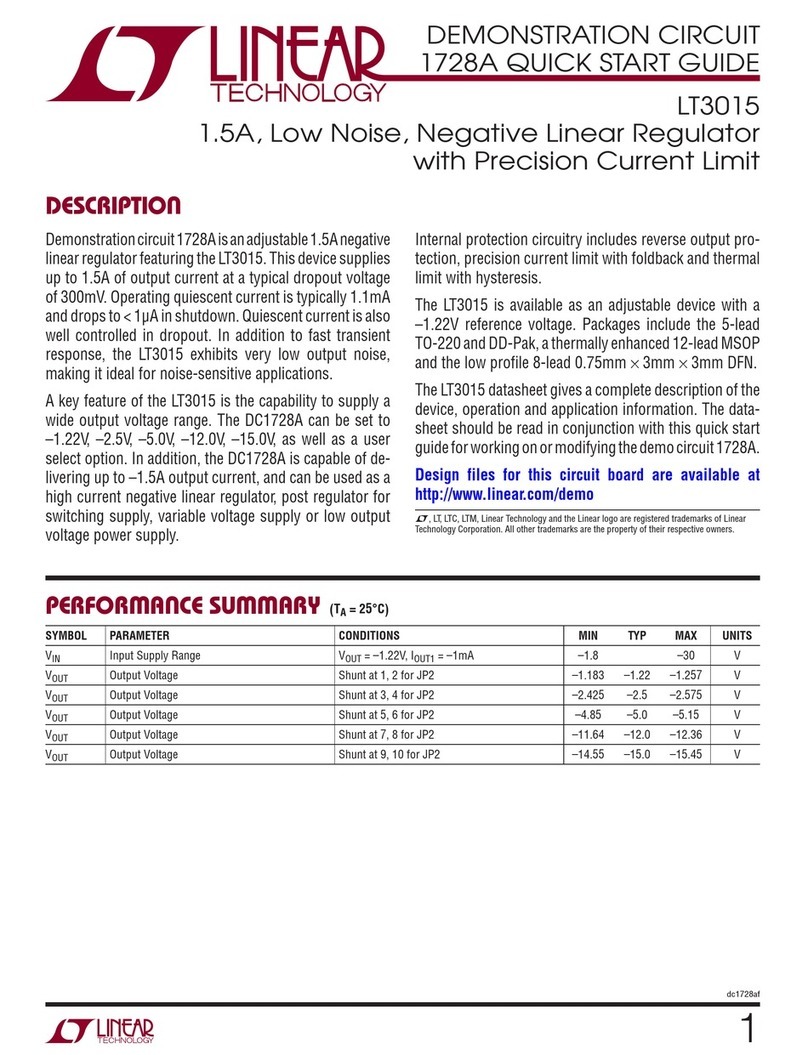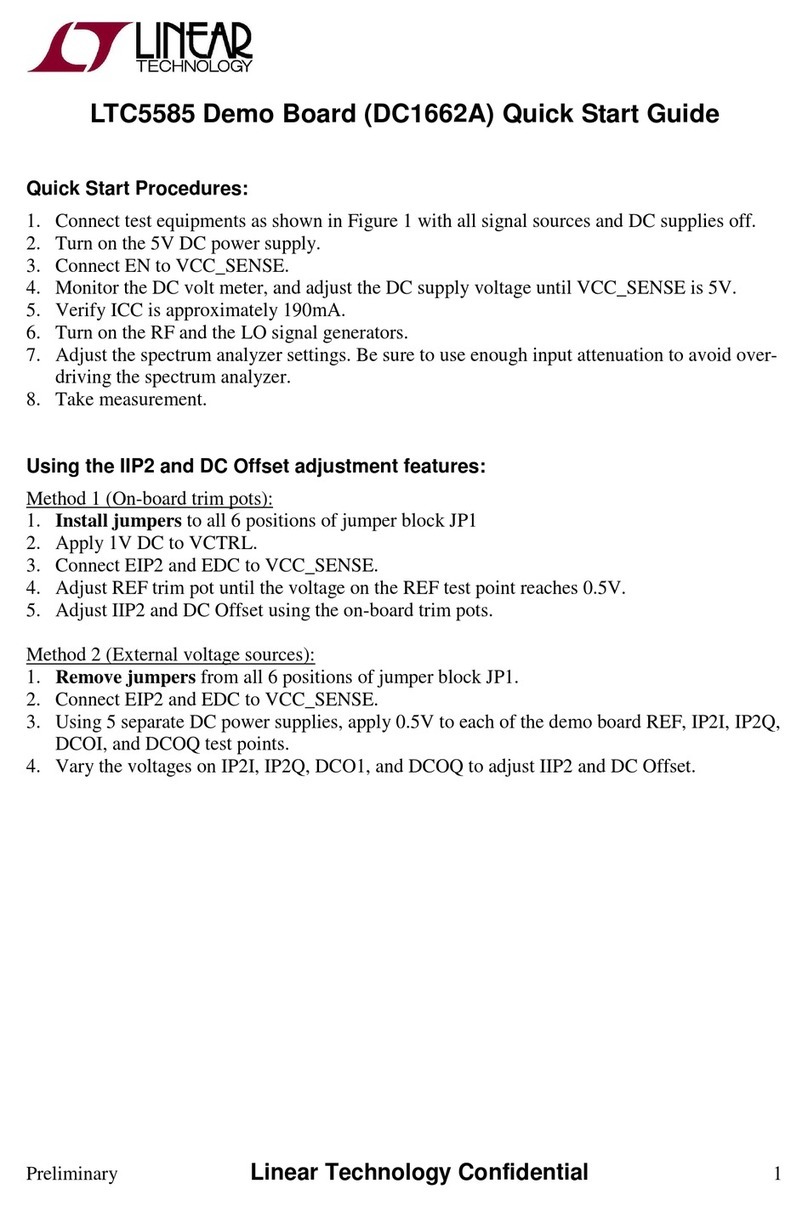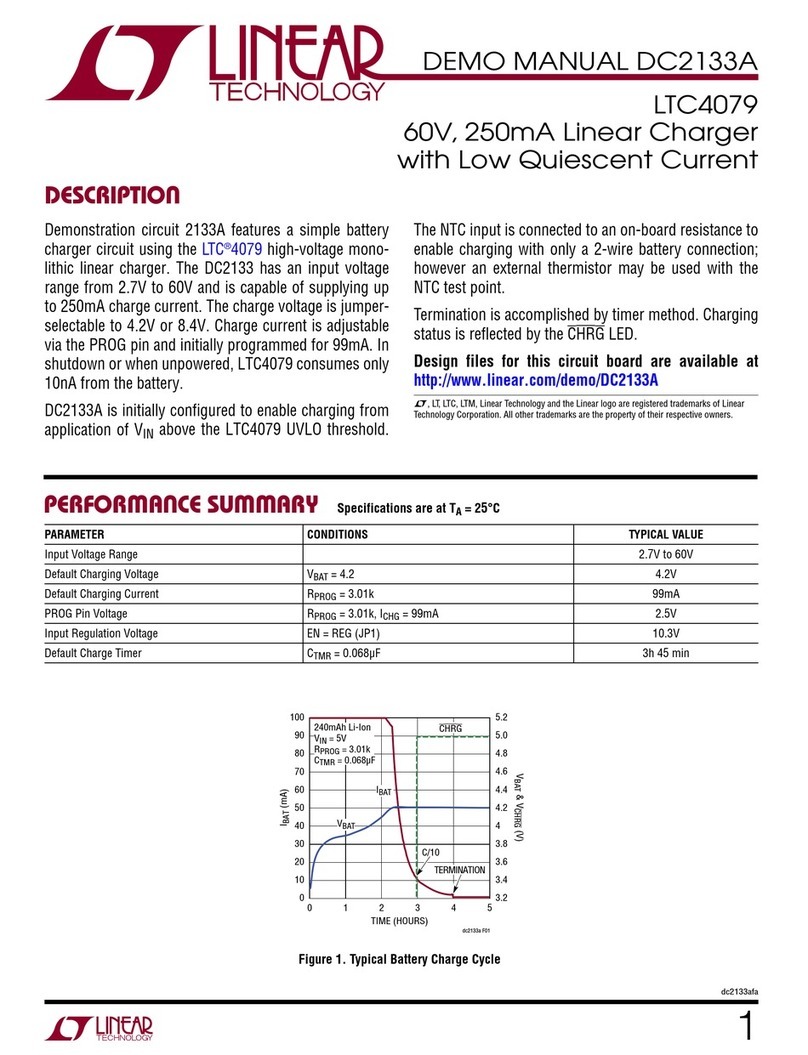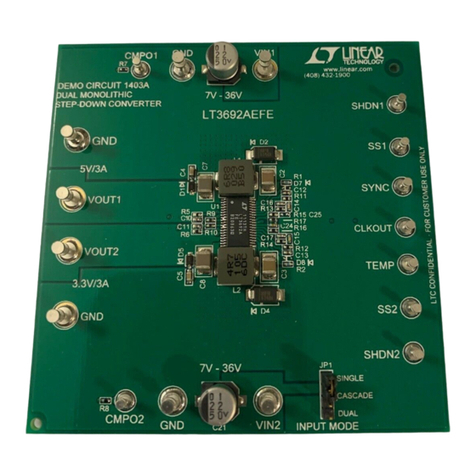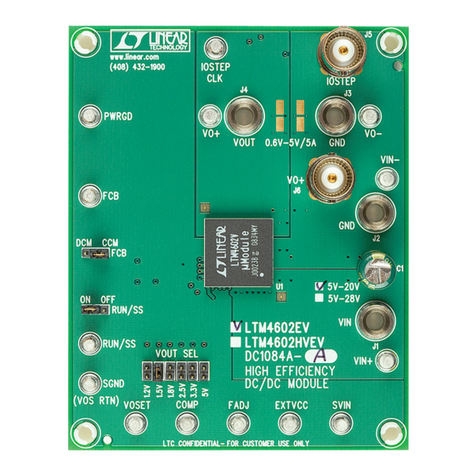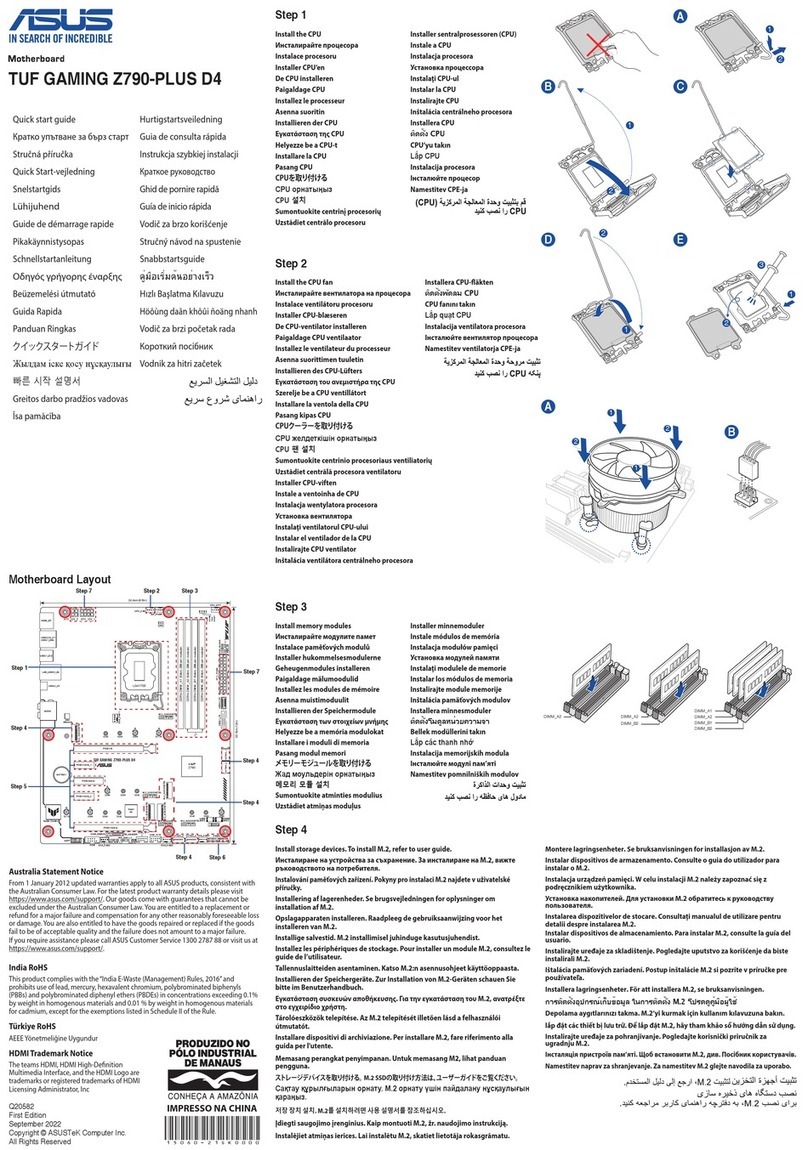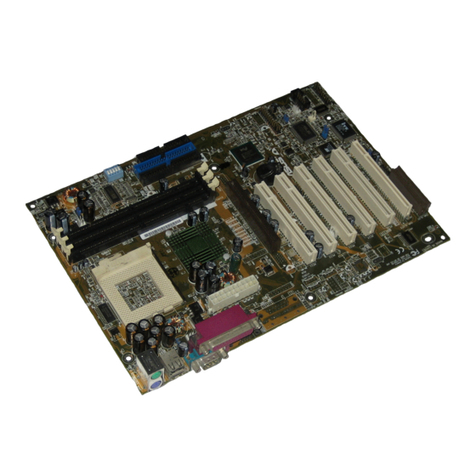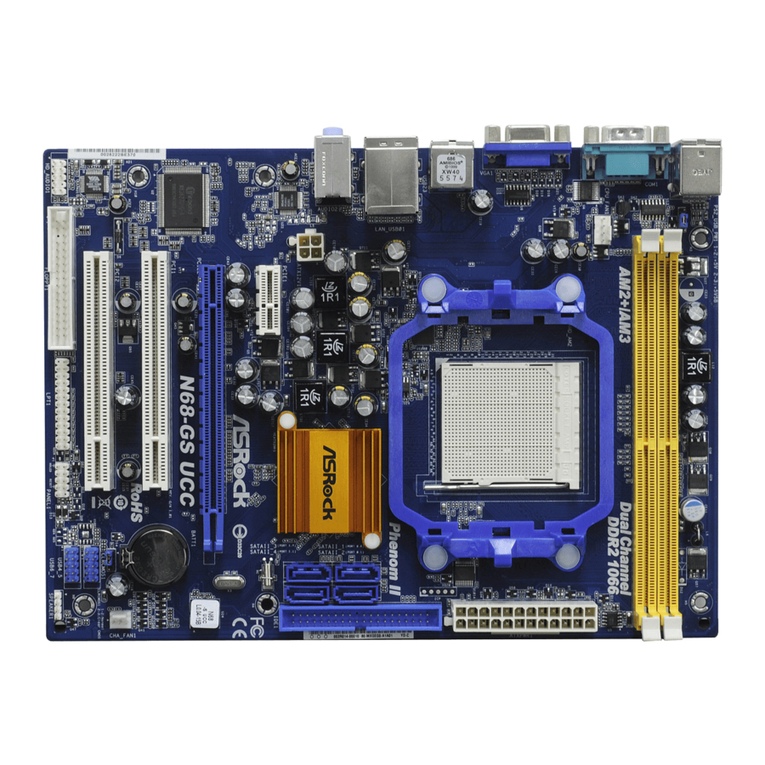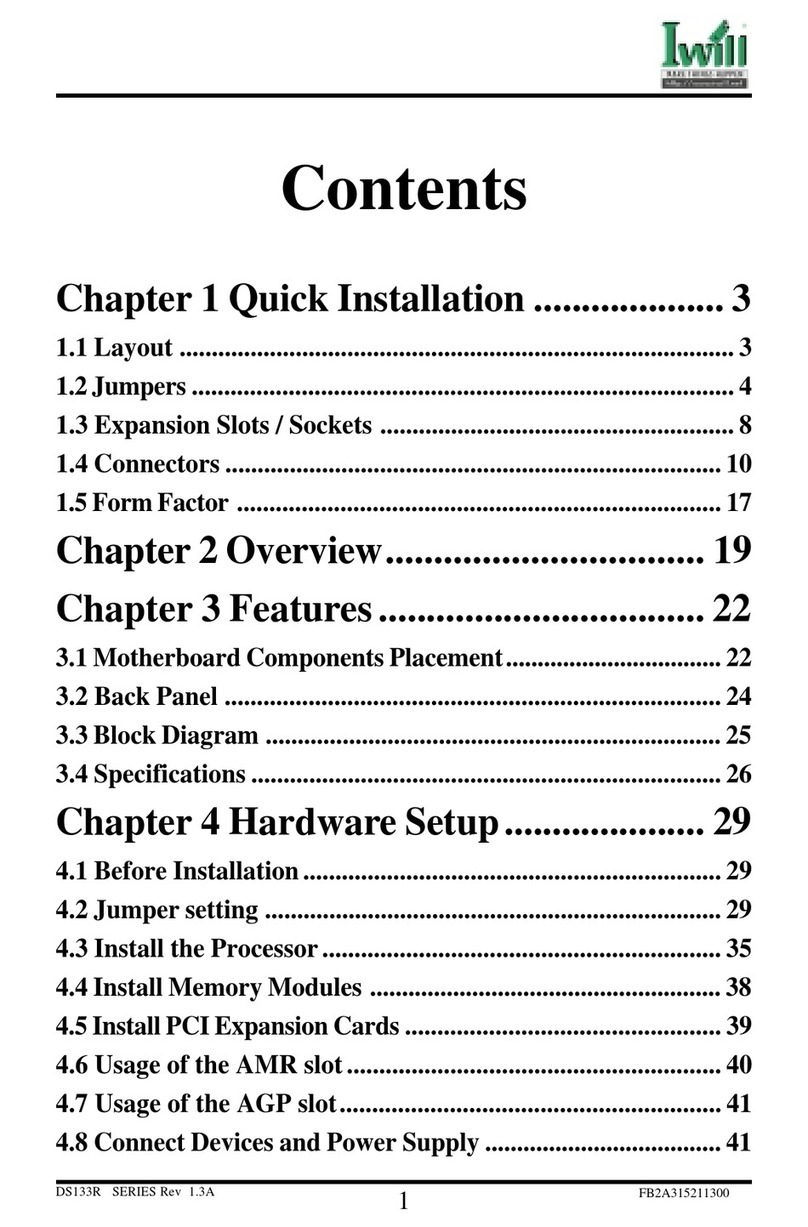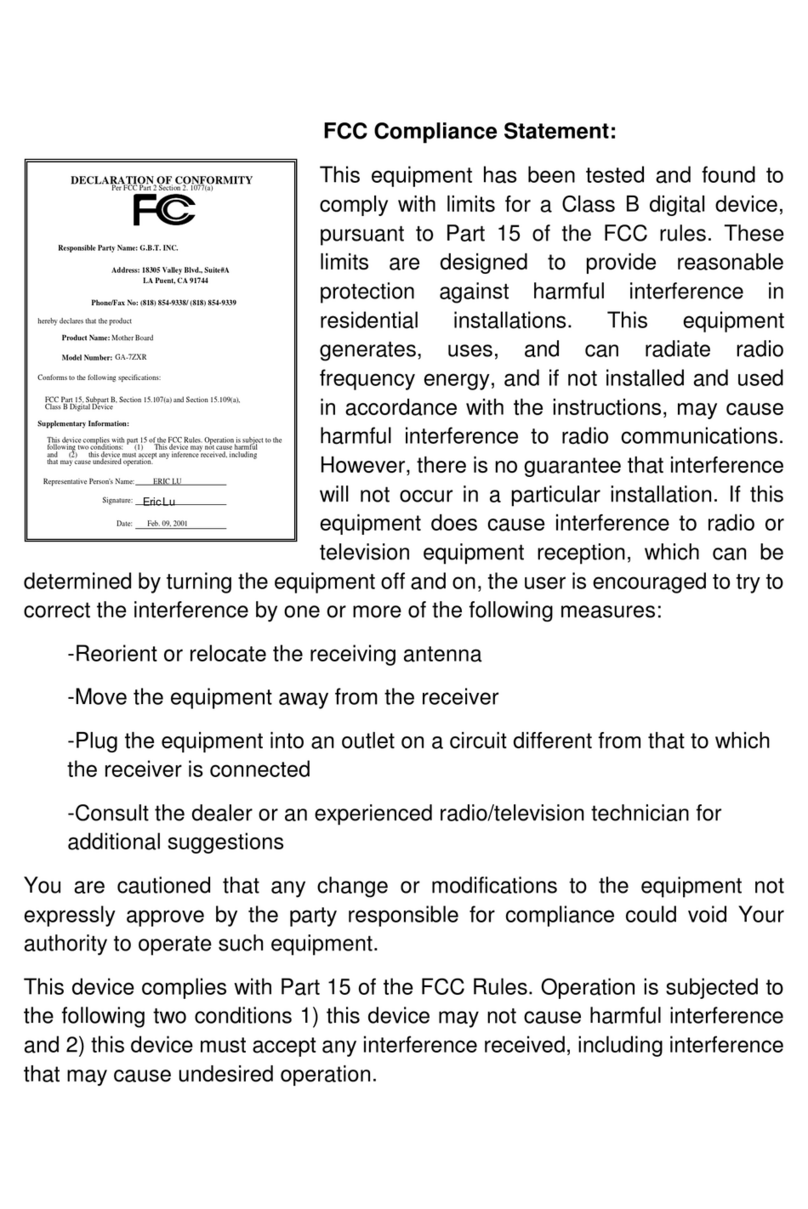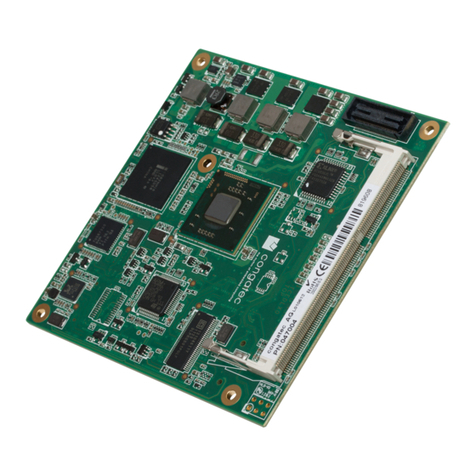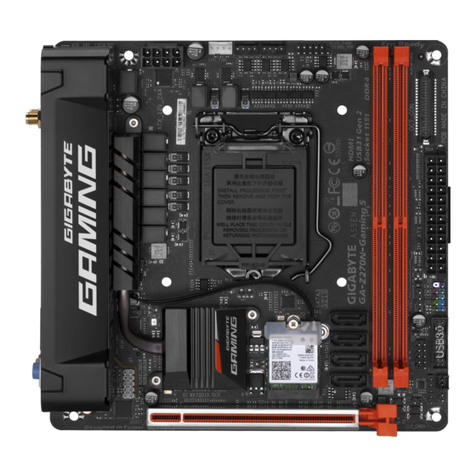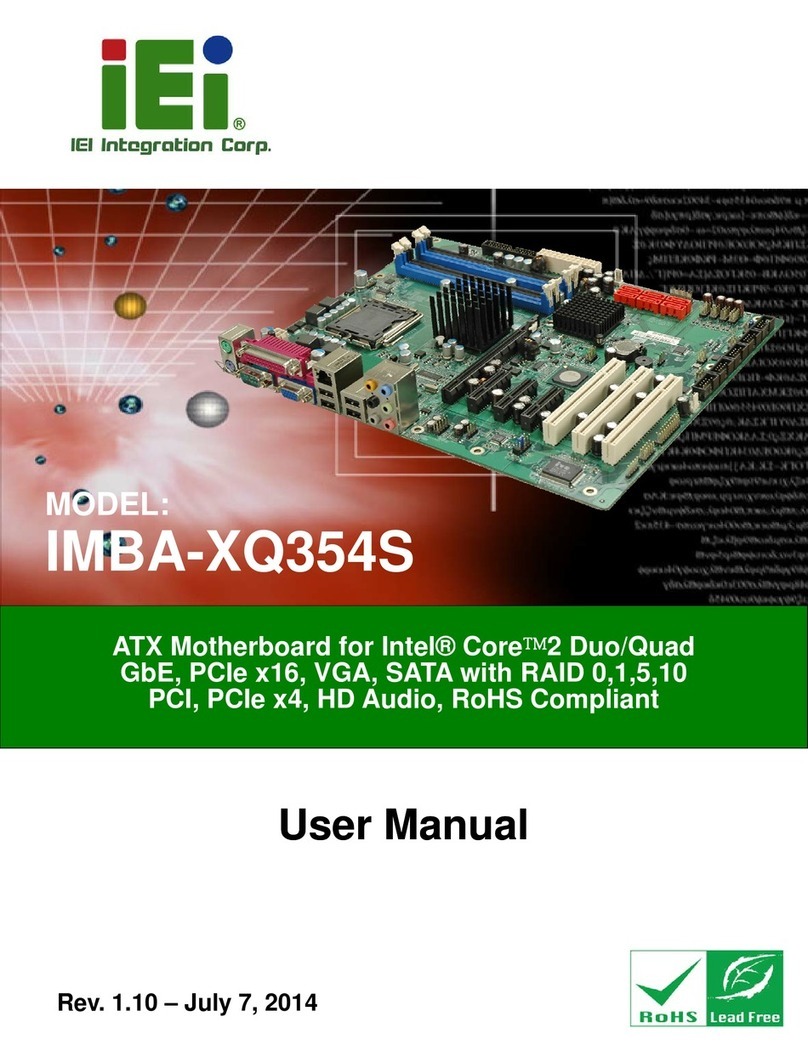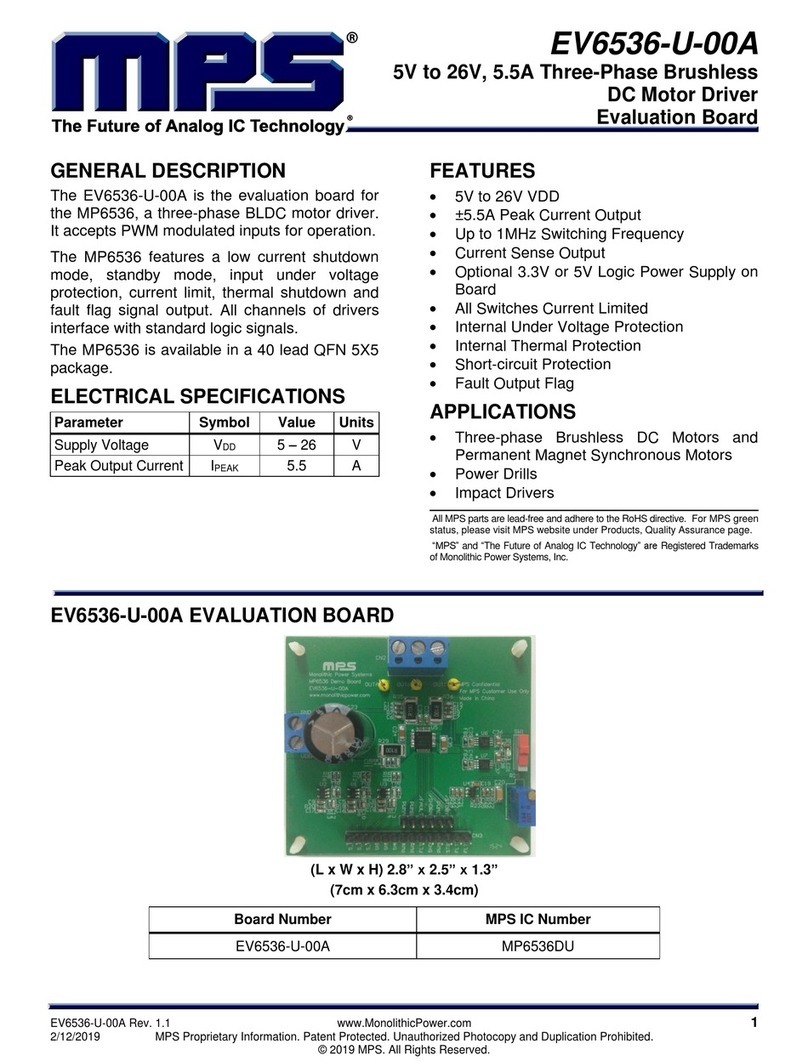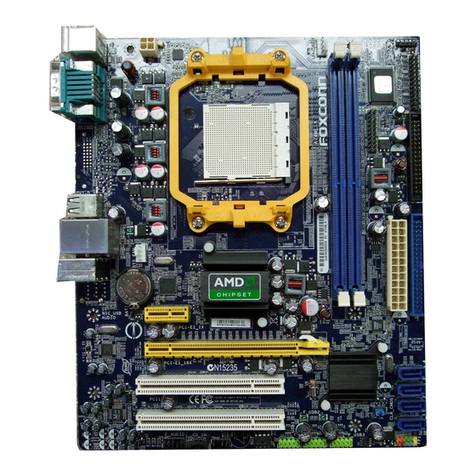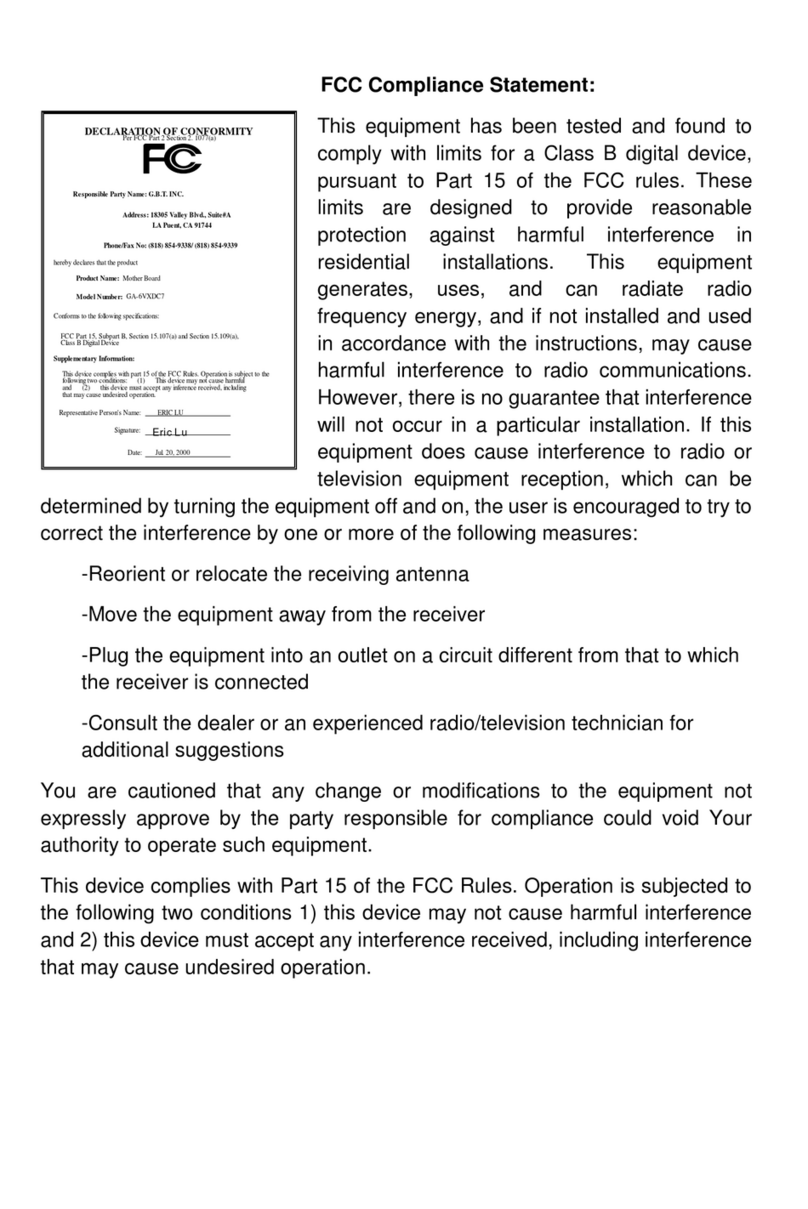
QUICK START GUIDE FOR DEMONSTRATION CIRCUIT 776
36V-72VIN, FORWARD CONVERTER
2
PWM gate pulses to the LTC3705 primary driver via
the small signal transformer, T3. The LTC3705 then
operates as a simple driver receiving both input sig-
nals and bias power through T3.
The transition from primary to secondary control oc-
curs seamlessly at a fraction of the output voltage.
From that point on, operation and design simplifies to
that of a simple buck converter. Secondary sensing
eliminates delays, tames large-signal overshoot and
reduces output capacitance. This, while utilizing off-
the-shelf magnetics and attaining high efficiency.
For large values of input inductance, a 100V, 47uF elec-
trolytic capacitor can be added across the input termi-
nals to damp the input filter and provide adequate stabil-
ity. See Linear Technology Application Note AN19 for a
discussion on input filter stability analysis. A recom-
mended part is the Sanyo 100MV39AX.
QUICK START PROCEDURE
Demonstration circuit 776 is easy to set up to evalu-
ate the performance of the LTC3705 and LTC3706.
Refer to Figure 1 for proper measurement equipment
setup and follow the procedure below:
NOTE:
When measuring the input or output voltage
ripple, care must be taken to avoid a long ground lead
on the oscilloscope probe. Measure the output (or
input) voltage ripple by touching the probe tip and
probe ground directly across the +Vout and –Vout (or
+Vin and –Vin) terminals. See Figure 2 for proper
scope probe technique.
1.
Set an input power supply that is capable of 36V to
72V to a voltage of 36V. Then turn off the supply.
2.
With power off, connect the supply to the input
terminals +Vin and –Vin.
a.
Input voltages lower than 36V can keep the con-
verter from turning on due to the undervoltage
lockout feature of the LTC3705.
b.
If efficiency measurements are desired, an am-
meter capable of measuring 3Adc can be put in
series with the input supply in order to measure
the DC776A’s input current.
c.
A voltmeter with a capability of measuring at
least 72V can be placed across the input termi-
nals in order to get an accurate input voltage
measurement.
3.
Turn on the power at the input.
NOTE:
Make sure that the input voltage never ex-
ceeds 72V.
4.
Check for the proper output voltage of 1.5V ± 1%.
Turn off the power at the input.
5.
Once the proper output voltages are established,
connect a variable load capable of sinking 50A at
1.5V to the output terminals +Vout and –Vout. Set
the current for 0A.
a.
If efficiency measurements are desired, an am-
meter or a resistor shunt that is capable of han-
dling 50Adc can be put in series with the output
load in order to measure the DC776A’s output
current.
b.
A voltmeter with a capability of measuring at
least 2V can be placed across the output termi-
nals in order to get an accurate output voltage
measurement.
6.
Turn on the power at the input.
NOTE:
If there is no output, temporarily disconnect
the load to make sure that the load is not set too
high.
7.
Once the proper output voltage is again estab-
lished, adjust the load within the operating range
and observe the output voltage regulation, ripple
voltage, efficiency and other desired parameters.
